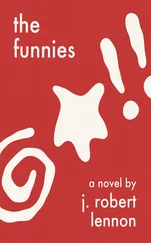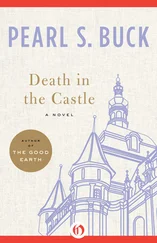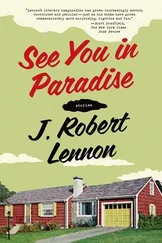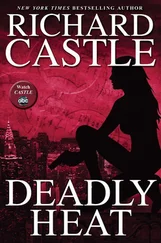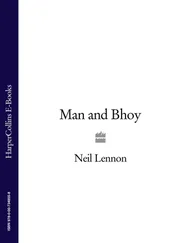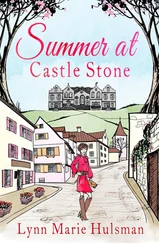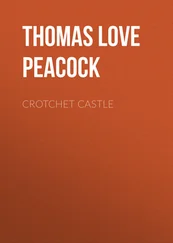I was facing, from my vantage point just behind the treeline, the back of the rock’s “ankle.” Just to the east stood the castle’s northwest tower — one of the two lowest, and the most damaged by time and weather. The north curtain wall led farther off to the east, while the western wall hugged the nearly vertical cliff of the “ankle.”
I say “hugged,” but in fact there was a narrow gap between the rock and the wall, owing to the natural unevenness of the cliff. This gap was approximately fifteen feet away from where I now stood. It was midafternoon, however, and the sun had sunk low enough so that the shadows of the trees covered the clearing. If I were to make for that gap, I would be exposed for the two seconds it would take me to cross the ten feet between the trees and the wall. But owing to the shadows, and my camouflage clothing, I believed I could make it without being detected. And since the figure I’d spied fleeing the scene of the foiled trap had been moving in a direction that would have taken him to this very spot, it was the last place from which he might be anticipating my approach. I decided to take the risk. Slowly, quietly, I moved close to the edge of the clearing; from behind a tall pine I surveyed the tower, the high cliff edge, the curtain wall. And then I ran.
Nothing happened. I reached the gap and wedged myself into it, the quiver containing my bow and arrows chafing against my back. The gap was even wider than I had assumed it to be, and, after moving several feet into the darkness, I rested comfortably there for a moment, catching my breath.
It was cold in the gap, with a strong smell of fungus and dead leaves. The ground beneath my feet was spongy, and the rock face felt massive and comforting behind me. I looked up at the strip of sky overhead. A hawk crossed it, circling. The only sound was that of my own breaths.
My original plan had been to wait here for my quarry to reveal himself. But some impulse, fueled by instinct or memory, caused me to move further into the gap. The cliffside was as irregular as it had appeared from the clearing, but it was obvious now that a man could move all the way to the southwest tower from here without much difficulty. And now, as my eyes adjusted to the dim, I realized that, in fact, a man had, and did. The spongy ground was quite clean and even, covered by a bed of pine needles; a faint depression ran down the center of it, as though it was frequently tamped down by human feet. The castle wall was impressively straight, and tilted slightly inward; I assumed it must be thicker at the base than at the top, assuring that it could not be breached from the ground. I entertained, briefly, the notion that I might be able to scale the wall by pressing my back against the rock and “walking” up, but I could see this was impossible: the gap at the top might have been as wide as five feet.
I pressed on, toward the center of the wall. A cloudbank had rolled in, and was now covering up the gap with a uniform gray; the light dimmed. It was then that I made an interesting discovery.
I had just inched around a bulge in the rock face, and found that the gap just beyond it widened considerably, for a length of perhaps six feet. The ground here was well worn, particularly right at the foot of the wall.
The key detail, however, was the wall itself. Its impenetrable mortared stone face was interrupted, at knee height, by what appeared to be a block of wood, snugly inserted in place of a single stone. It was approximately eighteen inches high by two feet wide, was depressed about two inches into the rock face, and bore a large iron handle, right in the center, fastened to its surface by large bolts.
Of course. I immediately recognized the block as the way in. I crouched down and gripped the handle with both of my hands, bracing myself for a great deal of exertion. But when I pulled, the block slid smoothly toward me a full inch, spilling a bit of debris, crumbs of mortar and pine needles, to the ground at my feet.
At this point I paused, considering. I had acted with the utmost care so far today, in spite of which I had nearly lost my leg. There was every reason to expect that someone, Doctor Avery Stiles himself, perhaps, now stood on the opposite side of this very wall, with one of his homemade poisoned arrows aimed at the hole. Even if he was not, he doubtless lurked somewhere in the compound, and would soon know that it had been breached. I had to proceed with care. I looked up once again at the lip of the curtain wall, then both ways down the length of the gap. Seeing nothing out of the ordinary, I slowly slid the block out of the wall and set it on the ground at my feet.
The block was very heavy, about eight inches thick, with a handle on the inside identical in design, but less damaged by the elements. The reason was clear: as I had predicted, the wall was very thick at its foot, sheltering the handle from harm. Indeed, I discovered, hazarding a peek inside the opening, that it was at least four feet thick — so thick that it must have been difficult to detect, from inside, whether someone had moved the block.
The hole — a tunnel, really — was smooth and even, and had obviously been part of the wall’s original design, rather than an afterthought dug out after construction. It was as neatly mortared as the exterior of the wall, and was more than wide enough to admit an adult male in good physical condition.
There was no need to wait. I removed my pack and quiver, ducked down, and climbed inside. I moved forward slowly, making as little noise as possible; the air grew cold as the wall closed in around me. I was reminded of my trip to the cellar of my house, and breathed deeply and evenly, in an effort to dispel my fear.
My head had soon reached the end, even as my ankles dangled out into the gap. I was looking out into a sheltered corner of the main courtyard that I had seen from the summit of the rock. A large piece of shrubbery grew directly before me, and I was reassured by the cover it offered. To the left was another wall, part of the large hall or dwelling I also remembered from before; the pieces of play or exercise equipment I remembered were also here, off to the right. I lay there for several minutes, looking and listening, and I detected no human presence besides my own.
Without further hesitation, I crawled out of the tunnel and onto a flagstone, where I crouched, ready to fight. I was, at last, inside the castle.
For all my anxiety at having breached my quarry’s stronghold, I must now confess that, at this moment, that anxiety was twinned with a second emotion, one less easy to identify, and more surprising. It was a feeling of belonging, if not of actual familiarity — a sense that, though I was far from safe standing here in the castle courtyard, my presence here had a rightness, that it represented the fulfillment of some previously unknown desire. It was as though something hanging crookedly in my mind had finally been righted.
For all the peculiarity of this feeling, however, I did not have time just now to stop and consider it at length. I studied my surroundings until I was confident that I had indeed gone unseen, then I reached back into the tunnel to grab hold of my pack and quiver. I dragged them through, and after a moment’s thought, wriggled in once again and took hold of the inside handle of the block. With some concerted effort, I was able to wedge it back into place from the inside. I realized that it might cause me trouble if I were to need to retreat quickly; but to leave the block lying there would signal to the Doctor, should he be outside and approach through the gap, that his fortress had been penetrated. The element of surprise was a reasonable trade for the seconds I might lose trying to escape. I did not, of course, plan to need to escape. Whatever happened, I intended to leave the castle without fear or haste.
Читать дальше

